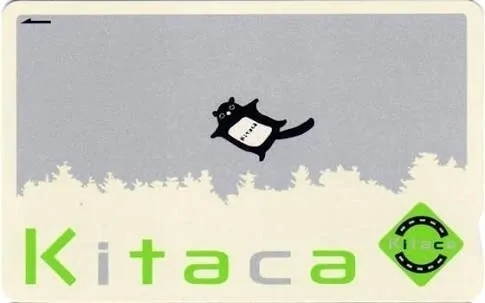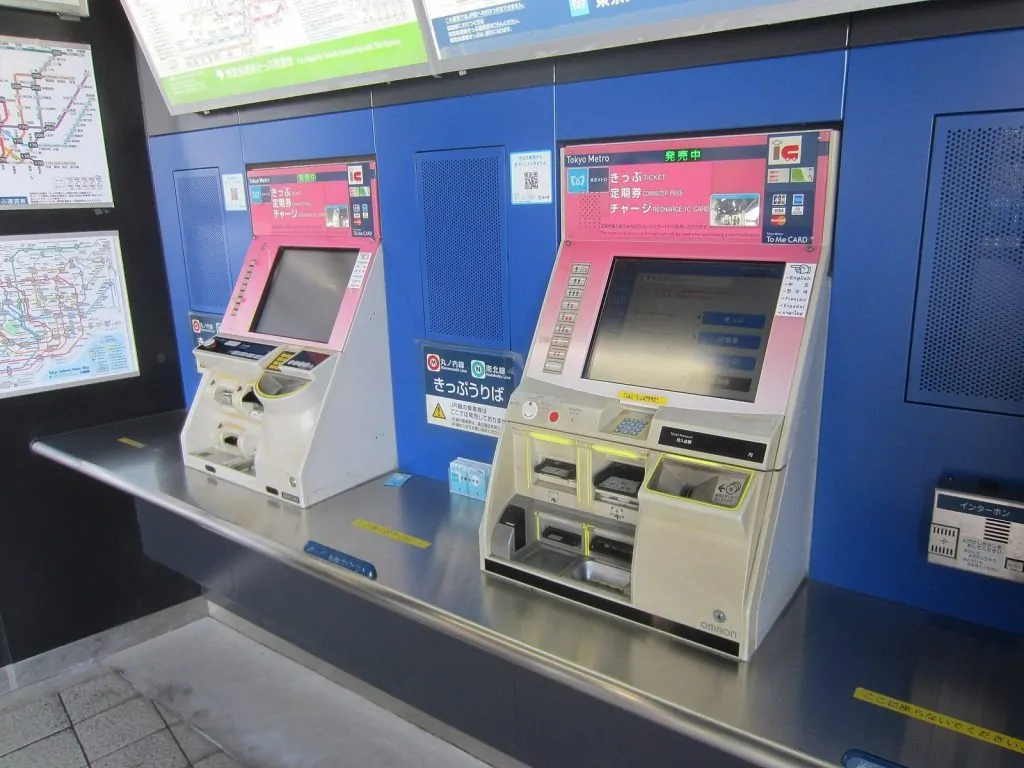If you plan on visiting Japan, an IC card will be the best traveling companion to take with you! This simple yet very convenient item allows you to pay for basic public transportation and purchase at various stores without fumbling with a single coin.
This article will cover everything you need to know to get your prepaid IC card and how to use it.
What is an IC Card?
In Japan, IC cards (Integrated Circuit Cards) are rechargeable prepaid e-money cards primarily used to pay for public transport such as trains and buses.
There are many Japanese IC cards (Suica, Pasmo, Icoca, etc.) mainly run by the Japan Rail Group and other operators throughout the country.
Being the perfect tool to move around, they are very popular among Japanese and overseas visitors. One of the most significant advantages of using IC cards is that you don’t need to buy tickets.
They also enable you to make smooth transfers from railway to railway regardless of the train company. In addition to travel, IC cards are also used for shopping and allow easy contactless payments.
What are the major IC cards?
Each region of Japan has its card, and each card can only be purchased in its original area.
Here are the major ones:
| IC Card | Description |
|---|---|
 | Suica card - Certainly, the most popular among Japanese IC cards, Suica cards are for JR East (Japan Railway East). They are available for purchase at major JR east stations in Niigata, Sendai and Kanto (Greater Tokyo) areas. |
 | Pasmo card - Pasmo cards are run by the Tokyo Metro Company. This company is mainly in charge of the Tokyo subway and buses which are not related to the JR Group. These cards are available in the Greater Tokyo area. |
 | Icoca card - Icoca is issued by JR West, meaning the Kansai (Osaka/Kyoto), Chugoku and Hokuriku areas. |
 | Kitaca card - It is run by JR Hokkaido and covers mainly the public transportation of Sapporo city and its surroundings. |
 | Toica card - Toica is the IC card for JR central, including Nagoya, as well as parts of Shizuoka. |
 | Sugoca card - The regional IC card of Kyushu. It covers trains in the Fukuoka, Kagoshima, Kumamoto, Oita and Nagasaki areas. |
 | Manaca card - The Manaca card is for users of main public transportation around Nagoya city which are not run by the JR Group. |
 | Hayakaken card - Hayakaken is the IC card associated with the subway of Fukuoka city in Kyushu. |
 | Nimoca card - It is issued by the Nishi-Nippon Railroad (or Nishitestu) for the buses and trains in Fukuoka prefecture. |
 | Pitapa card - This IC card differs from others because it is not a prepaid card but a post-pay one. It covers mainly the Kansai area (Osaka/Kyoto) as well as some parts of Okayama, Shizuoka and Hiroshima prefectures. |
Where can I use my IC card?
IC Cards were initially intended to pay fares only on train systems back when they first started appearing around 2001.
Nonetheless, they have expanded their reach across most major cities and work on almost all public transportation, such as trains, buses, subways (including the Tokyo metro), and streetcars.
Note that highway and night buses are not included and often require purchasing tickets in advance.
However, using an IC card when taking the Japanese bullet train, also known as Shinkansen, is not recommended. IC cards only work for a few, such as the Tokaido-Sanyo, and need some preparation beforehand to be usable.
Furthermore, some special trains, such as the ¨express¨ and ¨limited express¨ will require you to buy an additional ticket on top of using an IC card. The same goes for Green Cars, the JR ¨ first-class ¨ cars with a green logo.
Which IC card covers which area?
Since 2013, the operators of the ten cards listed have made it possible to use them almost everywhere in Japan. In other words, no matter which card you own, it will be compatible with the other nine transportation systems.
A prepaid IC card will enable you to quickly transfer between subway lines without purchasing a new ticket each time you make a connection, but only within the same area.
For example, suppose you own a Suica and start your trip from Tokyo. In that case, your destination needs to be inside the Suica-covered area, in this case, the Greater Tokyo, Niigata, or the Sendai region.
Using regular IC cards outside the above ten cards’ covered areas is impossible because the rest of the country is not equipped to support such a system.
Where to get an IC card?
IC cards are available in most major JR and subway stations. You can choose to buy it directly at a ticket counter. Another option would be to use ticket vending machines. Instructions are available in English and are easy to understand. You can find IC transport cards directly at Haneda airport and Narita.

A new IC card will cost you a minimum of 2000 yen: 500 yen for a deposit and 1500 yen of credit for your next trip. Of course, you can also choose to add more.
Since transportation fares are not the same for children under 12, their IC cards also differ.
You can only buy them through the ticket office at the train station (Your child’s passport will be needed for age verification).
Travel is free for up to 2 children below six years old. Any additional child will cost you half of the regular fare.
How to use an IC Card?
To use your IC card at a train station, place it on top of the card reader, wait for the clicking sound, and the ticket gate will open. The fare for the ride will be automatically deducted from your card once you exit the gates of your final destination station.
If the ticket gate doesn’t open, you don’t have enough money to pay for the total fare. Head towards the nearby fare adjustment machines and recharge your prepaid IC card.

To use your IC card on a bus, place it flat against the card reader as you board and once again when you get off.
How to top it up?
There are ticket machines in most train stations where you can recharge your IC card. You just have to insert your card, choose your language and follow the on-screen instructions.
All IC cards can be recharged without problem via ticket machines as long as they display the ¨IC¨ logo. Always take cash with you because Japanese ticket machines don’t accept credit cards.
It is also possible to recharge it on the bus; however, you need to ask the driver to do it for you, which is not always ideal.
How to check your IC Card Balance?
Tickets and fare adjustment machines are available at every station. These will allow you to make fare adjustments, add money or check your IC card balance. Ticket machines also give you the possibility to print your balance history.
How to get back my refundable deposit and unused credits?
When you leave Japan, go to a ticket office of a major station located in the area where the card was first issued, then return your IC card. They will give you back your 500 yen deposit and remaining credit minus an additional 220 yen fee. If your unused credit is less than 500 yen, you do not have to pay the 220 yen fee.
Is there an expiry date?
A regular IC card becomes invalid if it is not used at least once in 10 years. Unique versions of the Suica card (Welcome Suica) and Pasmo card (Pasmo passport) for foreign tourists are only valid for four weeks.
Which IC card should I pick? Suica vs. Pasmo
As mentioned earlier, Japanese IC cards can only be purchased from their respective covered area, and the same goes for returning them.
If you are coming to Japan and leaving via the Haneda or Narita airport, you only have two options: a Suica card or a Pasmo. Suica cards do cover larger areas which makes them your best bet.
When it comes to the Osaka or Kansai International airports, you might want to go for an Icoca. It is the most used IC card in the region.
Using an IC card as a means of payment
IC cards are a convenient way to shop without bothering with cash. You can use them to buy your next meal at a convenience store, rent coin lockers and parking lots, or even purchase drinks from vending machines just like a credit card.

Most restaurants and shops inside stations also accept IC cards as a payment method. Just scan the card on the reader in front of the cashier, and voilà!
Using your IC card through your mobile phone or your smartwatch
In 2006, Suica was the first IC card to introduce digital payments through mobile phones using Apple Pay and Google Pay. Years later, Pasmo operators managed to launch their payment system in 2020. Icoca is also planning to do the same by 2023.
Indeed, phones and smart watches are easy to keep track of your card balance and make payments without carrying extra cards.
Unfortunately, short-term visitors’ chances to use these digital services during their trip around Japan are slim to none. The set-up of these applications requires both your phone to be equipped with “Osaifu-keitai” (a different mobile technology rarely found in foreign telephones) and that you already live in Japan.
Conclusion
Hopefully, this article has given you a better understanding of what IC cards are and how they work in Japan. Easy to obtain and use, these ¨magical cards¨ are a must if you want to save time and make your trip as pleasant as possible.
Commonly Asked Questions about IC Cards:
IC Cards can be bought at a ticket vending machine at any railway station. The initial cost involves the return of 500 yen plus an initial fee (typically 1500 yen) to charge on the credit card.
You can use Pasmo and Suica cards anywhere; it doesn’t matter which card you hold. The main difference is the provider of those prepaid train cards: Suica is from JREast, and PASMO is from non-JR Rail companies in the Tokyo Region, such as Tokyo Metro and Toei. Though the difference is the PASMO card can be used to store day passes; therefore, if you plan to use day passes, PASMO might be a better pick.
IC cards are highly beneficial for traveling to Japan. You can buy them as a ticket to a ride or a locker at a railway station and for a beverage or snack from vending machines or convenience stores.
In Kyoto, you can find ICOCA cards, the local version of PASMO, and SUICA cards. IC cards are valid anywhere in Japan, so that you can get an ICOCA card in Tokyo metro stations.





Leave a Comment